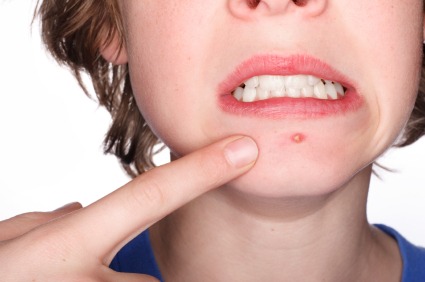Acne is a skin condition that consists of pimples, deeper lumps (cysts or nodules), and plugged pores (blackheads and whiteheads), that occur on the face, neck, chest, back, shoulders, and even the upper arms. It is the most common skin disorder in the United States, affecting 40 million to 50 million Americans.
Acne usually begins during puberty, but the condition is not restricted to an age group. Adults in their 20s, 30s, 40s — even into their 50s — can develop acne, and it can have a detrimental effect on self-esteem at any age. Acne is caused by three major factors:
1. Overproduction of oil by enlarged oil glands in the skin.
2. Blockage of the hair follicles that release oil.
3. Growth of bacteria, called P. acnes, within the hair follicles.
Internationally renowned board certified dermatologist and NY Times best‐selling author Dr. Leslie Baumann MD shares her answers to the acne questions she is asked most, and debunks a few common misconceptions.
1. What’s the difference between salicylic acid and benzoyl peroxide?
Salicylic acid helps exfoliate skin and keep pores clear, while benzoyl peroxide kills the bacteria that cause acne. They help improve acne in different ways and although they can be used together, I often recommend trying salicylic acid first since benzoyl peroxide can be irritating. Salicylic acid is safe for even sensitive skin (unlike benzoyl peroxide) and it can actually penetrate the sebum in your skin, clearing clogged pores as it reduces redness and inflammation. Try Neutrogena Rapid Clear Acne Defense Face Lotion or Clinique Acne Solutions Spot Healing Gel.
2. Does diet affect acne?
Preliminary research shows that dairy and sugar may increases acne. But contrary to popular belief, chocolate does not (unless it contains sugar!). Some doctors believe that the iodine in foods like shrimp may lead to acne as well.
3. How should I pop a pus-filled pimple?
I try not to advocate picking, but I know sometimes you have to. First, take a hot shower to open pores. Then use a sterile needle (boil it for 2 minutes and allow it to cool) and gently prick the center of the whitehead. (Get more tips in this article.)
4. Does my phone cause acne?
The bacteria that causes acne (P. acnes) is not spread from person to person, and there is no evidence that cell phones harbor it.
5. How does blue light kill acne?
P. acnes bacteria contain a substance called porphyrin that absorbs the blue wavelengths of light and kills the bacteria. Porphyrin isn’t found in other bacteria, which is why blue light doesn’t work for other skin infections. (Try blue light treatment at home with the Tria Skin Clarifying System)
6. Is acne hereditary?
I’m going to say probably, but the gene has not been identified yet.
7. How long does it take for acne medications to work?
It takes 8 weeks for a pimple to form, so you have to give any over-the-counter or prescription products that long to see results.
I hope you guys find this article useful!




I’m glad to pass by with your site. Very interesting in terms on how acne can be treated and how it is developed in the skin. Well, this is really exist especially during puberty. Don’t worry about it because a lot of medications can help remove them.